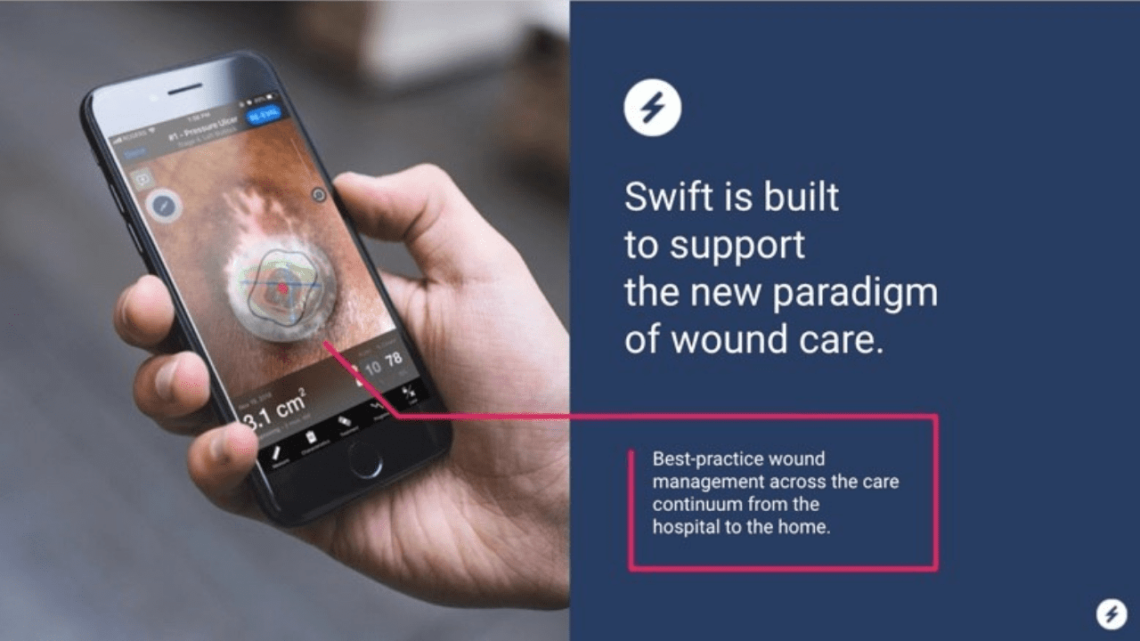Chronic wounds are a global epidemic, often masked as symptoms behind bigger diseases such as hypertension or diabetes. In Canada, 30 to 50 per cent of all healthcare involves a wound and $4 billion is spent on wounds annually.1 Our elderly population is more at-risk. One out of every four grandparents who in a long-term care facility are susceptible to ending up with a bed sore that may never go away.
Front line workers caring for wound patients face a difficult challenge, often having inadequate training, a limited number of wound specialists to access, as well as the clinical complexity and manual assessment of the wound. These factors make it difficult to provide high-quality wound care and result in more than 40 per cent of wounds being treated improperly.
The Digital Supercluster member community came together to address the wound care issue with the Telewound Care Canada project, which developed a technology solution to accelerate a remote model for wound care. Led by Swift Medical, the project brings together SE Health, AlayaCare, The Michener Institute at University Health Network, McGill University Health Centre and Home and Community Care Support Services – Central East.
Used by doctors, nurses and patients, the mobile application measures and assesses a wound and develops a 3D medical-grade image that informs the care plan. With 95 per cent accuracy, care providers can remotely monitor patients and provide personalized, preventative care through the platform’s predictive insights.
“The Telewound Care Canada project is making wound care accessible to patients across the country by building tools that transform healthcare and improve patient’s lives,” says Carlo Perez, CEO and Co-Founder of Swift Medical. “Our digital application is empowering patients to take medical-grade wound images from home. This enables them to receive better quality care, while also managing risk, cost and compliance.”
This virtual wound care model is also supporting remote communities, such as the Cree First Nation in northern Quebec, where patients have a high prevalence of diabetes. Previously, patients needed to travel to urban centres at a great expense in order to see a wound care specialist. Now, with the remote wound care technology, patients can monitor wound progress and local nurses can share details with wound specialists remotely.
Learn more about Telewound Care Canada and watch their Digital Demo Day presentation below.
